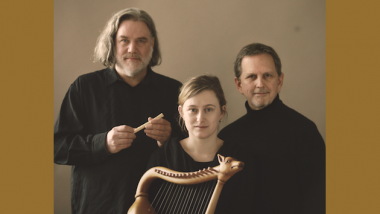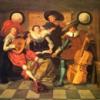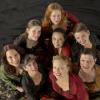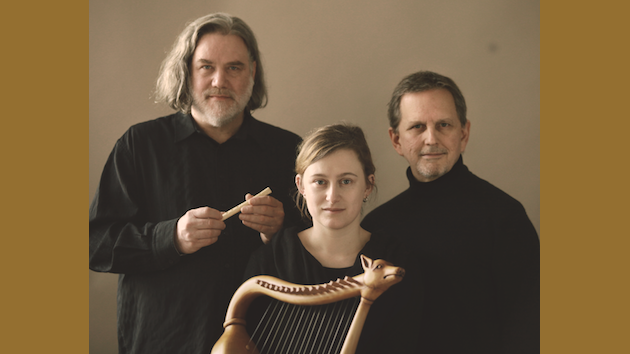
The term “early music” usually refers to the music of the 17th and 18th centuries: Telemann and Bach, with occasional offerings of slightly earlier composers like Gabrieli or Purcell. But in the hands of the extraordinary ensemble Sequentia, performing at last week’s international Berkeley Festival & Exhibition, “early” demands a more radical meaning, veering off the beaten path of Baroque to nearly a millenium earlier.
“Monks Singing Pagans” presented music that has not been heard for a thousand years, from the monasteries of the so-called “Dark Ages.” Because only slim evidence of this music survives, Sequentia’s performances depend on research and combing old manuscripts for their slender but telling clues about melody and rhythm. The performances, therefore, are necessarily conjectural: The ensemble is a kind of laboratory experiment, analyzing and reconstructing the music of our predecessors by tracing the faint records we can find.
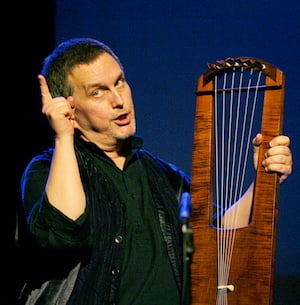
These Dark-Ages songs are themselves far from dark, particularly in thrilling and passionate performances by this trio of intense and skilled musicians. Benjamin Bagby is the compelling American singer and harpist well-known for his performances in Anglo-Saxon of the epic poem Beowulf. He is joined in Sequentia’s “Lost Song” project by the extraordinary Swiss singer and scholar Hanna Marti and by flutist Norbert Rodenkirchen, whose playing is at once graceful and intense.
The instruments, like the music, are a product of both archaeology and guesswork. While a harp excavated from an Anglo-Saxon burial mound reveals the shape of its original, the artifact says nothing about tuning or performance; yet in Bagby’s hands, a replica of that harp became a powerful tool for shaping a bardic recitation. Likewise, Rodenkirchen used his replica of a swan’s bone flute, with its astonishingly high, penetrating tones, to channel both a shaman and a monk.
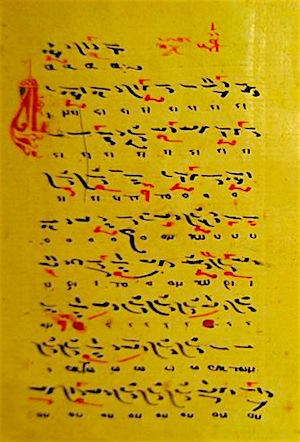
Sequentia makes no claims that its performances are literally authentic to what would have been heard in a Rhenish monastery in 1100. The textual evidence left by monkish scribes is simply too slim for us to know much about their original performances. But the manuscripts contain enough: enigmatic calligraphic notations called “neumes,” which provide the foundation for melodies extrapolated and improvised from them. In the hands and voices of Sequentia, these often enigmatic “notes” become as musically satisfying as any performance based on a modern score.
If the instruments and the music partake of conjecture, the texts are inescapably authentic. These monks respected words, and Sequentia honors that respect. And what fascinating texts they are! The scholar-monks who wrote this music revered not only the prayers and scriptures of their Christian faith but also older, non-Christian myths about Norse gods and Roman heroes. The monks recorded spells that unabashedly use the magic of words to negate the effects of poison or to shrink a tumor, for example. They wrote (and sang) the consolations of pagan philosophy, medieval self-help about how to endure the vicissitudes of fortune. One such text, from 12th-century Paris, reminds us that we are not alone in standing aghast as fortune elevates a fool and “makes a loudmouth a statesman.”
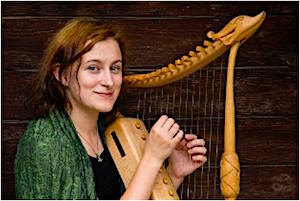
The medieval monks sang songs about such classic, and distinctly pagan, tales as the labors of Hercules and the tragic loves of Cleopatra and Dido. Hanna Marti sang a particularly compelling version of Ovid’s story of the death of Orpheus, the half-divine bard of classical antiquity, attacked and dismembered by the frenzied followers of Bacchus.
Sequentia’s powerful rhetoric made the texts essential to the musical experience. The distant languages of medieval north Europe — Old High German, Anglo-Saxon, and especially Latin — inflected every rhythm and every pitch, startlingly different and yet intensely personal. English translations were projected at the front of the church, though apparently not fully visible to some of the audience.
The resonant space of St. Mark’s Episcopal Church in Berkeley was perfect for this concert, one of a number of musically top-quality programs at the week-long festival presented by the San Francisco Early Music Society. The main events (not to mention the over 70 fringe concerts and lectures) ranged chronologically from Sequentia to Schumann.
At the end of the final concert on Sunday, Lionel Meunier, director of the stunning vocal ensemble Vox Luminis, gave well-deserved accolades to Robert Cole, stepping down this year after founding and directing the festival for almost 30 years.

